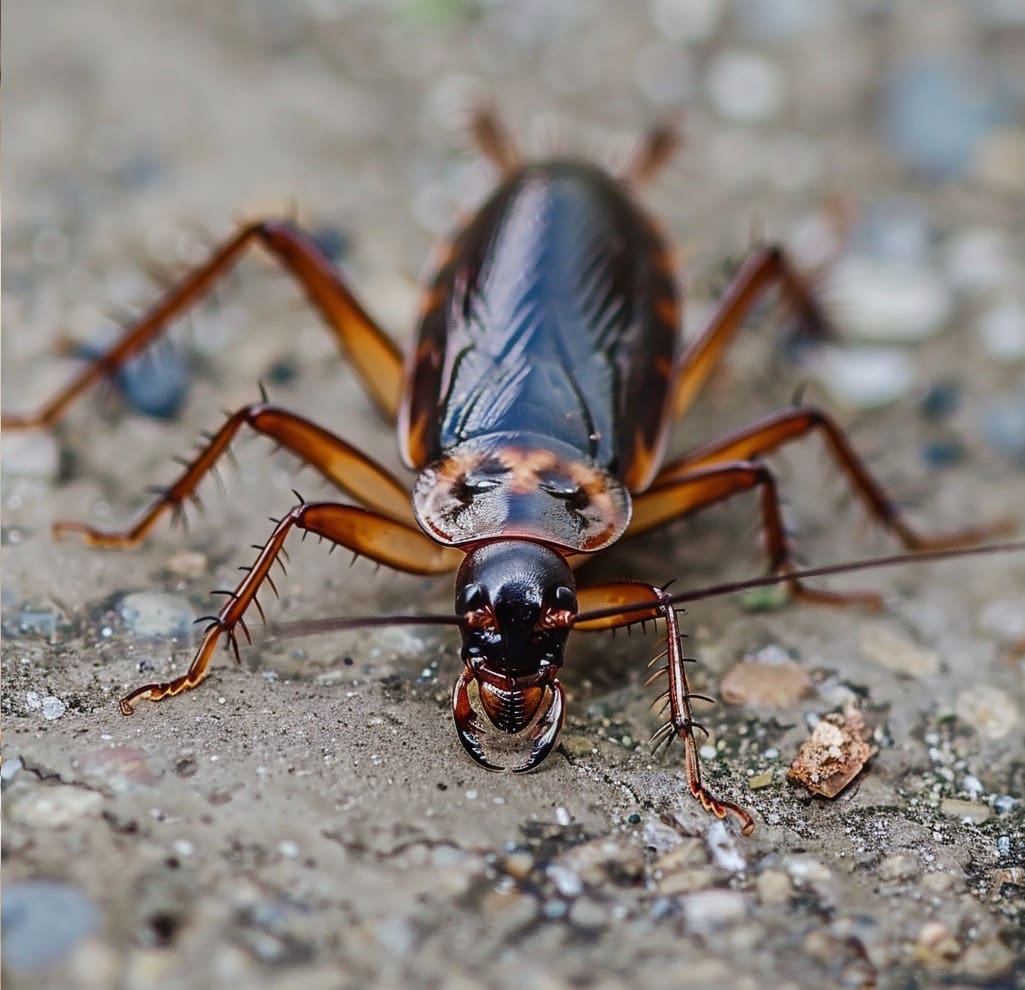
Attention Southern Homeowners: Are Pests Invading Your Space?
Discovering a pest infestation in your home can be unsettling, to say the least. It’s a common issue that many homeowners face, yet it often goes unnoticed until it becomes a significant problem. I've learned that staying vigilant and recognizing the early signs can make all the difference. It's not just about the annoyance; pests pose serious health risks and can cause extensive property damage. That's why I'm here to share my insights on the top 5 signs that indicate you might have a pest problem, helping you take action before it escalates.
Understanding these signs is crucial for maintaining the comfort and safety of your home. From subtle indicators to more obvious red flags, being aware of what to look out for can save you time, money, and unnecessary stress. Let's dive into the essential signs that signal it's time to inspect your home more closely or consider professional help.
Top 5 Signs You Might Have a Pest Problem
Unusual Sounds and Odors
In my experience, one of the earliest indicators of a pest issue arises from our senses: hearing and smell. You might notice unusual sounds, such as scratching, gnawing, or scampering within walls, particularly at night when pests are most active. Similarly, distinct smells can be a telltale sign. Pests like rodents and cockroaches leave behind a musty, distinctive odor that can hint at their presence long before they're seen. If you detect these sensory clues, it's worth investigating further to prevent a minor issue from becoming a significant infestation.
Visible Damage to Your Home
Evidence of physical damage around your home often points directly to pest activity. I've seen how pests like termites and carpenter ants can wreak havoc on wood structures, leaving behind hollow sections, sawdust, or unexplained holes and cracks. Not to mention, damage around entry points, such as chewed wiring or gnawed edges on doors and windowsills, can often highlight the issue. Spotting these signs early allows for quicker actions, ideally saving homeowners from extensive and costly repairs down the line.
Pest Droppings and Tracks
Another clear indicator of a pest problem are droppings and tracks. Pest droppings, varying in size and shape based on the pest type, can offer significant clues about the unwelcome guests lurking in your home. Moreover, tracks or smudge marks, especially along walls or near food sources, can also signal their presence. I always advise homeowners to pay attention to these signs, as identifying the pest can tailor the most effective solutions for removal and prevention.
Evidence of Nests and Hives
Finding evidence of nests or hives within your home or property is a direct sign of pest infestation. Rodents, for instance, create nests from shredded materials like paper or fabric, often hidden in secluded, hard-to-reach spots. In contrast, insects such as bees and wasps may build hives in attics or exterior walls. Spotting these structures certainly necessitates immediate action, as it typically indicates an established colony or swarm, rather than a few stray pests.
Sudden Appearance of Pests
Lastly, the regular or increased sighting of pests themselves, particularly during the day, suggests a larger hidden population. Seeing pests like roaches, ants, or rodents more frequently around your home can be alarming and is often the most undeniable sign of an infestation. It's pivotal not to ignore these sightings, as pests tend to multiply quickly, with the potential to lead to a more severe infestation, health risks, and property damage.
Recognizing these top five signs can equip homeowners with the knowledge to spot a pest problem before it escalates. Taking timely and decisive action can safeguard your home's comfort, health, and structural integrity, ensuring a pest-free environment for you and your family.
How to Identify Common Pest Types
Recognizing the early signs of pest infestations is crucial to maintaining the integrity of your home. If you've observed any of the top five indicators of a pest problem, it's time to delve deeper into identifying the common types of pests that might be invading your space. Below, I'll guide you through distinguishing between various pests, focusing on insects and rodents as well as larger wildlife intrusions.
Insects and Rodents
The most frequent unwelcome guests in our homes include a variety of insects and rodents, each leaving distinct markers of their presence. Identifying the type of pest can greatly aid in determining the appropriate course of action for eradication. Insects such as termites and carpenter ants are notorious for wood damage, evidenced by small piles of sawdust around wooden structures. This type of damage necessitates immediate attention to prevent structural compromise.
For rodents like mice and rats, droppings are a telltale sign. These droppings are small, dark, and often found near food sources or nesting areas. Rodents are also known for leaving gnaw marks on wires, woods, or even walls. Another less discussed, yet significant, indicator is the noise they make, such as scratching, gnawing, or scampering behind walls or in attics.
Larger Wildlife Intrusions
While insects and rodents make up a significant portion of pest infestations, larger wildlife can also pose a problem. Animals such as squirrels, raccoons, or even birds can make their way into your home, typically seeking shelter or food. Signs of their presence include larger entry points, like holes near the roofline or damage to exterior structures, which they may use to gain access to your attic or crawl spaces.
Nesting materials scattered in hidden areas or the presence of larger droppings around your property are clear indicators of wildlife intrusion. These animals often leave more substantial evidence of their presence, such as damage to gardens or plants and distinctive noises that can include louder scratching or moving sounds in parts of your home not typically accessed by smaller pests.
My experience tells me that understanding the specific type of pest you're dealing with is key to effectively addressing the problem. Each pest requires a tailored approach to removal and prevention, making identification the first critical step in protecting your home. Remember, if you're unsure about the type of pest or how to handle it, consulting with a professional pest control service is always the best course of action. Their expertise can save you time, money, and potentially prevent further damage to your home.
Early Detection Strategies
Regular Home Inspections
I can't stress enough the importance of conducting regular home inspections as a foundational strategy for early detection of pesky invaders. This proactive measure involves a thorough check of both the interior and exterior of your residence. I start by examining the common entry points such as windows, doors, and the roof for any signs of damage or openings that could serve as gateways for pests. Cracks in the foundation and gaps around utility lines also demand my attention, as these are often overlooked highways for pests into your home. Additionally, it's crucial to inspect areas that provide moisture, food, or shelter to pests, such as kitchens, basements, and attics. By staying vigilant and conducting these inspections seasonally, I've managed to identify potential problems before they escalate into significant infestations, ultimately saving time, money, and stress.
Monitoring for Pest Activity
Beyond structural inspections, monitoring for active signs of pest presence is an essential component of my early detection arsenal. I pay close attention to unusual noises, like scratching or tapping within walls, especially at night, which could indicate rodents or, more sinisterly, termites. Any changes in odor within the home could also be a telltale sign; a musty or urine-like smell often points towards a rodent issue, while a sweet smell could suggest an ant infestation. I also keep an eye out for visible droppings, nests, or damage to wood, fabrics, and electrical wiring. Setting up traps and cameras in strategic locations has provided me with a direct view of pest activity, allowing me to respond swiftly. Implementing these monitoring tactics not only aids in early detection but also helps in tracking the effectiveness of any pest management measures I've put in place.
Solutions for Managing Minor Infestations
In the ongoing battle against pests, identifying the problem early can certainly limit the damage and the need for extensive professional intervention. However, when faced with minor infestations, there are several steps homeowners can take before calling in the experts. Here, I'll explore effective solutions for managing these smaller-scale pest problems.
Natural and DIY Remedies
I've found that natural and DIY remedies can be surprisingly effective for minor pest infestations. These methods not only reduce the use of chemicals in the home but are also cost-effective and often utilize items already found in the pantry.
- Essential Oils: For instance, peppermint oil is excellent for repelling spiders and mice. A few drops on a cotton ball placed at potential entry points can keep these pests at bay.
- Diatomaceous Earth: This is a powder that's harmless to humans and pets but lethal to insects with exoskeletons, such as ants and cockroaches. Sprinkling this around the perimeter of your home creates a barrier they cannot cross.
- Vinegar Solutions: A mixture of water and vinegar can deter ants and other small insects. Spraying this solution around windowsills and doorways can prevent pests from entering.
- Sealing Entry Points: Often, the most effective action you can take is to seal up any cracks or openings with caulking or weather stripping. This prevents pests from entering in the first place and doesn't require any chemicals.
When to Seek Professional Help
While DIY solutions are great for minor issues, there comes a point when professional help may be necessary. Here are a few situations where I'd recommend calling in the experts:
- Persistent Infestations: If you've tried multiple remedies and pests continue to return, it's time to seek professional help. Persistent infestations may indicate a larger problem that requires specialized knowledge and equipment.
- Significant Damage: Any signs of significant damage, such as weakened floors or walls from termites, warrant immediate professional intervention. The structural integrity of your home could be at risk.
- Health Risks: Certain pests, like rodents or ticks, can pose serious health risks to your family and pets. If there's any chance of disease transmission, it's best to involve professionals who can safely and effectively address the problem.
- Larger Wildlife: If your pest problem involves larger wildlife, such as raccoons or squirrels, professional removal ensures the safety of both the animals and your family. Wildlife specialists can relocate these animals following local regulations.
I always advocate for early detection and taking immediate action at the first sign of pests. While minor infestations can often be managed with DIY remedies, don't hesitate to seek professional help when the situation escalates. Remember, the goal is to protect your home and health, and sometimes that requires calling in the experts.
Preventive Measures to Keep Pests at Bay
Given the emphasis on early detection to prevent pest infestations, I've uncovered that the battle against pests begins with decisive preventive strategies. Transitioning from identifying signs of pest problems, I'll now guide you through crucial steps to fortify your home against these unwelcome visitors.
Securing Your Home Against Entry
First and foremost, securing your home’s perimeter is paramount. I find that many pests exploit tiny openings to infiltrate homes. Ensuring doors and windows seal tightly eliminates common entry points. For instance, replacing worn-out weatherstripping and repairing damaged screens can significantly deter pests. Also, consider sealing cracks and openings in the exterior walls with durable materials like caulk or steel wool, especially around utility pipes and wires that enter your house. It's fascinating how such simple measures can create a formidable barrier against pests.
Another area of concern is the roof, an often-overlooked entryway for pests. By inspecting the roof annually and repairing loose shingles and sealing gaps around chimneys and vents, you can prevent pests from gaining upper-level access. Tree branches that overhang the roof can serve as bridges for pests, so trimming these back is a wise move.
Maintaining Cleanliness and Reducing Clutter
Maintaining cleanliness is another critical preventive measure that I always emphasize. Pests, ranging from insects to rodents, are chiefly attracted to food and water. By keeping kitchen surfaces clean, storing food in sealed containers, and managing garbage efficiently, you minimize the risk of pest attraction. Regularly emptying trash bins and using bins with locking lids can further dissuade pests.
Reducing clutter is equally important, as it can eliminate potential hiding spots for pests. I recommend periodic decluttering sessions to dispose of unnecessary items and organize storage areas. This is particularly effective in areas like basements and attics, where clutter tends to accumulate and provide perfect nesting spots for pests.
Ensuring your home remains dry is also vital, as many pests seek out moisture. Fixing leaks promptly, using dehumidifiers in damp areas, and ensuring proper drainage around your home can keep it less appealing to moisture-seeking pests.
By integrating these preventive measures into regular home maintenance routines, you can effectively keep pests at bay. It's remarkable how a few proactive steps can significantly contribute to a pest-free living environment. Remember, the goal is not just to eliminate pests, but to create conditions that are inherently unwelcoming to them, ensuring your home remains a sanctuary, free of unwanted guests.
Romex Pest Control - Southern US Pest Experts
Building on the importance of early detection and effective preventive measures against pest infestations, I find it essential to highlight the role of professional pest control services. In the Southern US, where the climate can foster a range of pest-related challenges, Romex Pest Control stands out as a beacon of reliability and expertise.
Firstly, Romex Pest Control specializes in identifying and addressing the unique pest problems prevalent in the Southern US. From termites that thrive in the warm, humid weather to carpenter ants that find sanctuary in our wooden structures, their team possesses the regional knowledge necessary for effective pest management.
Secondly, their approach to pest control extends beyond mere elimination. Romex Pest Control emphasizes preventative strategies that are crucial for maintaining a pest-free environment. This includes sealing points of entry, performing detailed inspections, and crafting customized treatment plans that cater to the specific needs of each home or business.
Moreover, their commitment to safety and eco-friendliness resonates with homeowners and businesses alike. Utilizing the latest pest control technologies and methods, they ensure minimal environmental impact while maintaining maximum efficacy against pests.
Lastly, their swift response to pest emergencies makes Romex Pest Control a trusted partner in the battle against pests. Whether it's routine inspections or urgent pest removal, their team is ready to provide timely and effective solutions.
Incorporating Romex Pest Control's services into a comprehensive pest management plan significantly enhances the effectiveness of keeping pests at bay. Their expertise not only helps in addressing current infestations but also plays a vital role in preventing future pest problems. As I've learned from my experience and research, partnering with specialists like Romex Pest Control is key to maintaining a healthy, pest-free environment.
In Conclusion
Acknowledging the early signs of a pest problem is crucial for maintaining a healthy, pest-free home. Through my experience, I've observed that pests, if not managed timely, can lead to significant damage and unnecessary expenses. Partnering with specialists like Romex Pest Control, especially in regions with distinct pest challenges, substantially enhances the effectiveness of pest management strategies.
Focusing on preventive measures, such as securing your home's perimeter and maintaining cleanliness, plays a pivotal role in deterring pests. However, despite these efforts, pests can find their way into our homes due to their persistent nature and the inviting opportunities our dwellings offer. That's where understanding the top signs of a pest problem becomes invaluable.
From unusual noises in the night to the distinct odor indicating the presence of pests, being vigilant about these signs allows for swift action. Identifying these issues early can prevent the severe damage pests like termites can inflict on your home. Not only does early detection save on costly repairs, but it also ensures the health and safety of your living space.
Moreover, consulting with professionals like Romex Pest Control offers peace of mind. Their expertise in using eco-friendly practices and providing swift emergency responses aligns with the goal of effective pest management while ensuring the sustainability of our environment. Remember, the key to a pest-free home lies in vigilance, preventive measures, and swift action upon detecting any signs of an infestation.
My guidance aims to empower homeowners with knowledge and solutions for tackling pest problems efficiently. Taking proactive steps and consulting with experts when necessary can safeguard your home against pests, ensuring a safe and comfortable environment for you and your family.
We hope you enjoy these informational articles. If you'd like to learn more about our eco-friendly pest control services, call (844) 955-2447.
Read More
Your Path to a Pest-Free Home or Business
Romex Pest Control
We are committed to protecting you, your children, and your pets with our eco-friendly, child-friendly, and pet-friendly guaranteed pest control solutions.
Romex Pest Control is fully insured and licensed in Texas, Oklahoma, Louisiana, and Mississippi.
Service Areas:
Hours
M-F 8 am–5 pm
Sat 8 am–2 pm
Sun Closed
Established 2016 © Copyright 2025 Romex Pest Control










